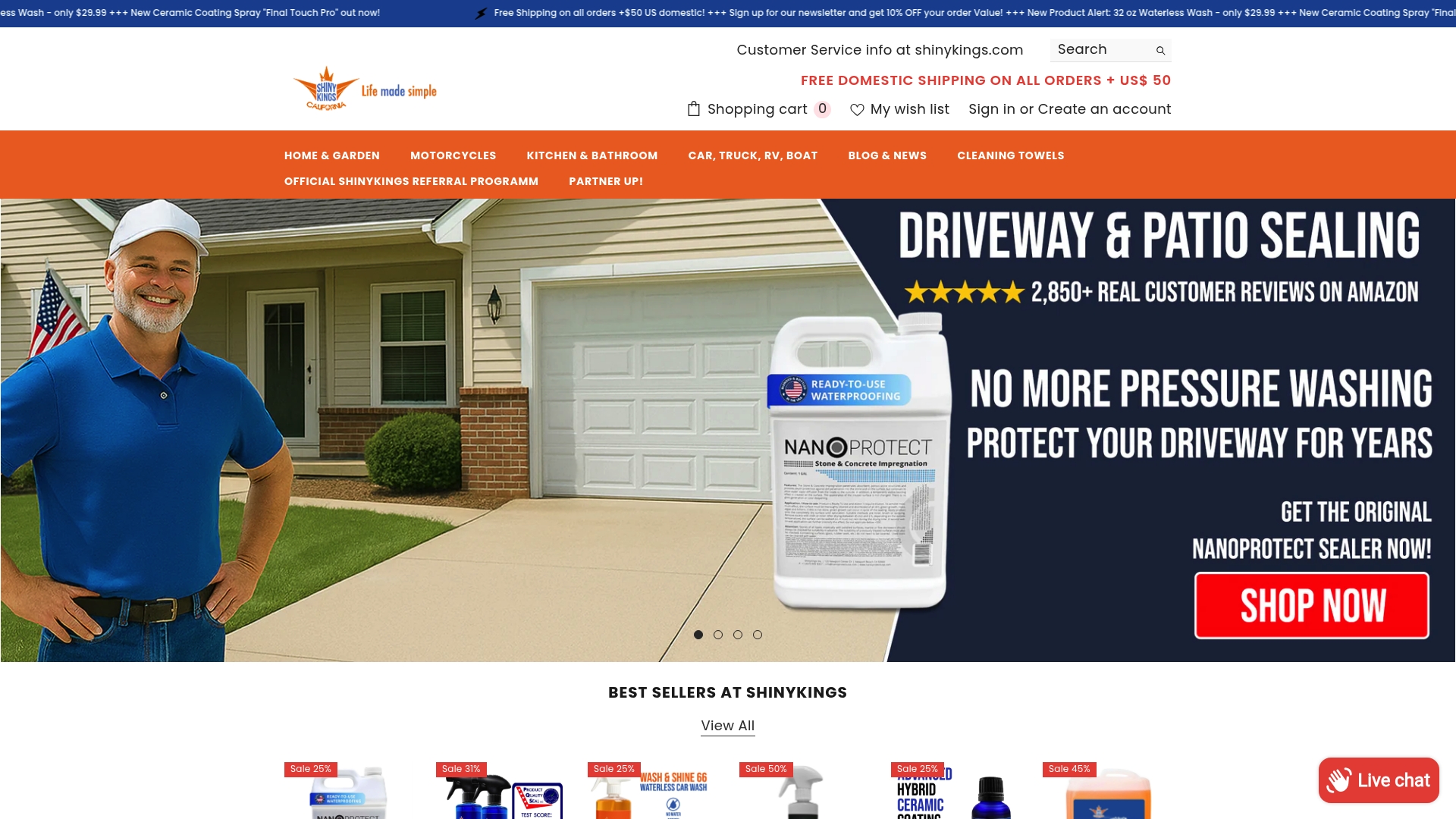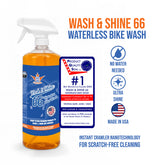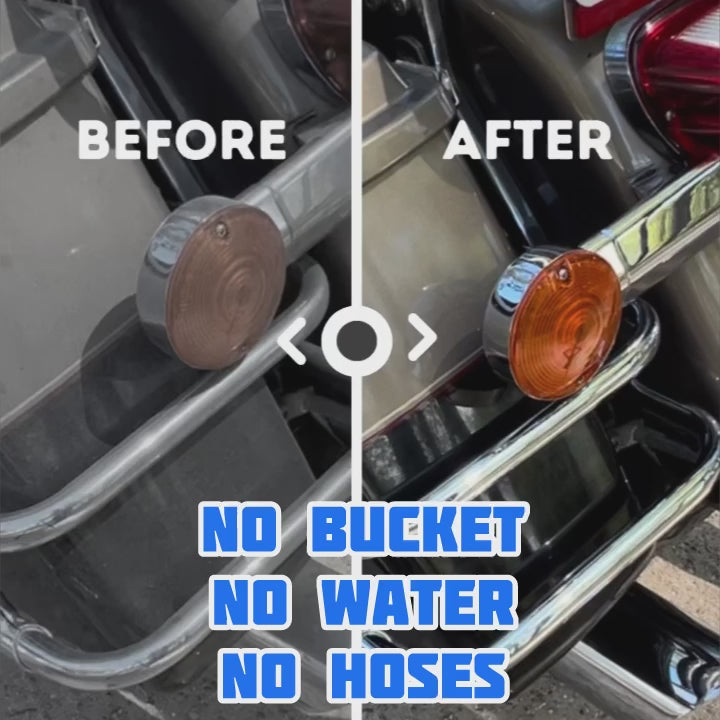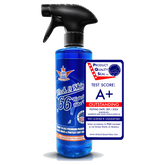7 Essential Wood Sealer Types Every Homeowner Should Know
Did you know that nearly 90 percent of homeowners worry about wood damage from moisture and sunlight every year? Protecting wooden surfaces keeps your furniture, decks, and floors looking beautiful longer and saves money on repairs. Understanding the different types of wood sealers can make all the difference for anyone looking to extend the life and beauty of their wood, whether for quick fixes or long term care.
Quick Summary
| Takeaway | Explanation |
|---|---|
| 1. Use water-based sealers for easy application | Water-based sealers are user-friendly, with low odor and fast drying times, making sealing convenient for homeowners. |
| 2. Oil-based sealers provide deep protection | These sealers enhance wood grain visibility and create a robust barrier, ideal for high-durability needs. |
| 3. Acrylic sealers dry quickly, perfect for urgent projects | With a rapid drying time and excellent water resistance, acrylic sealers are great for kitchens and bathrooms. |
| 4. Polyurethane offers exceptional scratch resistance | This sealant is ideal for high-traffic areas, providing a lasting protective layer against wear and tear. |
| 5. Hybrid sealers combine benefits for specialized needs | Combining various technologies, hybrid sealers adapt to unique environments, ensuring comprehensive wood protection. |
Table of Contents
- Water-Based Wood Sealers: Easy Application And Clean-Up
- Oil-Based Wood Sealers: Deep Penetration And Rich Finish
- Acrylic Wood Sealers: Quick Dry And UV Protection
- Polyurethane Wood Sealers: Durable And Scratch Resistant
- Wax-Based Wood Sealers: Natural Look With Basic Protection
- Epoxy Wood Sealers: Maximum Moisture And Chemical Resistance
- Hybrid Wood Sealers: Combining Benefits For Special Needs
1. Water-Based Wood Sealers: Easy Application and Clean-Up
Water-based wood sealers represent the most homeowner-friendly solution for protecting wooden surfaces with minimal hassle. These versatile sealants offer an excellent balance between performance and user convenience, making them ideal for DIY enthusiasts and professional woodworkers alike.
Unlike solvent-based alternatives, water-based wood sealers provide exceptional protection while maintaining an incredibly straightforward application process. Their low odor and quick drying time mean you can seal your wooden surfaces without disrupting your entire household routine. Read more about wood sealing techniques to understand how these products work.
Key Benefits of Water-Based Wood Sealers:
- Environmentally friendly formulation
- Minimal volatile organic compounds (VOCs)
- Fast drying time
- Easy soap and water cleanup
- Transparent finish that preserves wood’s natural appearance
When applying water-based wood sealers, preparation is crucial. Always ensure your wooden surface is clean, dry, and free from previous finishes or debris. Use a lint-free cloth or high-quality foam brush to apply thin, even coats. Most water-based sealers require two to three coats for optimal protection, with light sanding between applications to promote better adhesion.
One significant advantage of water-based wood sealers is their versatility. They work exceptionally well on various wooden surfaces including decks, furniture, interior trim, and outdoor woodwork. The transparent finish means you can protect your wood without sacrificing its natural beauty or grain patterns.
Pro tip: Always test the sealer on a small, inconspicuous area first to ensure color compatibility and desired finish. Temperature and humidity can impact drying time and overall performance, so choose a mild day with moderate conditions for best results.
2. Oil-Based Wood Sealers: Deep Penetration and Rich Finish
Oil-based wood sealers represent the gold standard for woodworkers seeking maximum protection and a luxurious, rich finish. These specialized sealants penetrate deep into wood fibers, creating a robust barrier against moisture, wear, and environmental damage. Learn more about different sealer types to understand their unique properties.
Characteristics of Oil-Based Wood Sealers:
- Superior wood penetration
- Enhanced wood grain visibility
- Long lasting protection
- Excellent UV resistance
- Deeper color enrichment
Unlike water-based alternatives, oil-based sealers create an exceptional protective layer that goes beyond surface treatment. According to Heritage Natural Finishes, specialized bio-based oil blends can actually nourish wood while sealing it. These formulations often include natural ingredients like tung oil and polymerized linseed oil, which provide deep conditioning alongside protective properties.
When applying oil-based wood sealers, preparation is key. Ensure your wooden surface is clean, smooth, and free from previous finishes. Use lint-free cloths or natural bristle brushes for even application. Multiple thin coats work better than a single thick layer, allowing each coat to fully absorb into the wood grain.
Pro tip: Oil-based sealers typically require longer drying times compared to water-based products. Plan your project with adequate ventilation and allow 24 to 48 hours between coats. Temperature and humidity can significantly impact drying and curing times, so choose moderate conditions for best results.
Interior furniture, exterior decking, and wooden architectural elements can all benefit from oil-based wood sealers. The rich, deep finish not only protects your wood but also enhances its natural beauty, bringing out stunning grain patterns and color depth that other sealant types cannot match.
3. Acrylic Wood Sealers: Quick Dry and UV Protection
Acrylic wood sealers represent a modern solution for homeowners seeking fast, efficient protection with minimal complexity. These innovative sealants combine speed, durability, and comprehensive wood surface protection in one user-friendly package. Discover more about surface protection techniques.
Key Performance Characteristics:
- Rapid drying time
- Excellent UV resistance
- Water and stain repellent
- Transparent protective layer
- Easy application and cleanup
According to industry research, acrylic wood sealers provide remarkable benefits across various wood surfaces. These water-based sealers create an impermeable barrier that protects against moisture, stains, and environmental damage. Manufacturers like WOCA highlight the unique properties of acrylic emulsions that enable fast drying and strong surface bonding.
The application process for acrylic wood sealers is straightforward. Begin by ensuring your wooden surface is clean, dry, and free from previous finishes. Use a high-quality foam brush or lint-free cloth to apply thin, even coats. Most acrylic sealers dry within one hour, allowing you to complete your project quickly and efficiently.
Pro tip: Apply multiple thin layers rather than a single thick coat. This approach ensures better absorption, more uniform coverage, and a more durable protective finish. Allow each layer to dry completely before applying the next, typically waiting 30 to 60 minutes between coats.
Acrylic wood sealers excel in high-moisture environments like kitchens and bathrooms. Their water-resistant properties and fast-drying nature make them ideal for protecting wooden surfaces against daily wear and potential water damage. Whether you are sealing furniture, trim, or decorative woodwork, acrylic sealers offer a convenient and effective protection solution.
4. Polyurethane Wood Sealers: Durable and Scratch Resistant
Polyurethane wood sealers represent the ultimate defense for high traffic wooden surfaces, offering unparalleled protection against daily wear and tear. These remarkable sealants create an incredibly hard protective film that shields wood from scratches, impacts, and environmental stress. Learn more about polymer sealant technologies.
Polyurethane Sealer Advantages:
- Exceptional scratch resistance
- Long lasting protective layer
- Suitable for high traffic areas
- Available in water and oil based formulations
- Excellent moisture barrier
According to research, polyurethane varnishes form an incredibly robust protective film particularly effective on hardwood surfaces. These sealers come in two primary variants: water based and oil based. Water based polyurethane offers faster drying times and lower odor, while oil based options provide deeper wood penetration and a richer finish.
When applying polyurethane wood sealers, preparation is critical. Start by ensuring your wooden surface is completely clean, smooth, and free from dust or previous finishes. Sand the surface lightly between coats to promote better adhesion and a smoother final finish. Most professionals recommend applying three thin coats rather than one thick layer for optimal protection.
Pro tip: Choose the right polyurethane formulation based on your specific project. High traffic areas like floors require maximum durability, while decorative furniture might benefit from a more aesthetic, less industrial finish. Always work in a well ventilated area and use protective equipment during application.
Polyurethane sealers excel in environments demanding maximum protection. Hardwood floors, kitchen countertops, dining tables, and outdoor furniture can all benefit from this incredibly durable sealing technology. By creating a nearly impenetrable barrier, polyurethane ensures your wooden surfaces remain beautiful and functional for years to come.
5. Wax-Based Wood Sealers: Natural Look with Basic Protection
Wax-based wood sealers offer homeowners a gentle approach to wood protection that preserves the material’s inherent beauty and character. These specialized sealants provide a subtle protective layer that enhances wood’s natural appearance while offering fundamental environmental defense. Explore more about specialized wood protection methods.
Wax-Based Sealer Characteristics:
- Minimal surface alteration
- Enhanced wood grain visibility
- Basic moisture resistance
- Natural semi gloss finish
- Easy reapplication process
According to research from wood care specialists, wax-based sealers like Woodoc 30 contain unique formulations that include UV absorbers and natural wax compounds. These ingredients work together to nourish wood fibers while providing a protective barrier against environmental challenges such as moisture, sunlight, and potential biological threats like algae or mold.
Application of wax-based sealers requires a gentle touch and understanding of wood’s natural characteristics. Begin by thoroughly cleaning your wooden surface and allowing it to dry completely. Use a soft cloth or specialized applicator to work the wax sealer into the wood grain, applying thin and even layers. Most wax sealers recommend multiple light coats rather than a single heavy application.
Pro tip: Wax-based sealers excel on decorative wooden items, outdoor furniture, and surfaces where you want to maintain the wood’s original texture and appearance. They work particularly well on hardwoods and decorative pieces where aesthetic preservation is as important as protection.
Unlike more aggressive sealant types, wax-based products provide a breathable protective layer that allows wood to age gracefully. They are particularly suitable for artistic wooden pieces, garden furniture, and interior woodwork where you want to showcase the material’s natural beauty while offering basic environmental protection.
6. Epoxy Wood Sealers: Maximum Moisture and Chemical Resistance
Epoxy wood sealers represent the ultimate defense for wooden surfaces exposed to extreme environmental challenges. These advanced sealants create an impenetrable barrier that protects wood from moisture, chemicals, and potential structural degradation. Discover protection strategies for challenging surfaces.
Epoxy Sealer Performance Features:
- Exceptional moisture barrier
- Chemical resistance
- High durability
- Strong adhesion properties
- Prevents wood rot and decay
According to industrial research, epoxy moisture control systems are two component resin membranes that provide extraordinary protection for wooden surfaces. These specialized sealants work by creating a vapor resistant membrane that dramatically reduces moisture transmission through wood substrates, effectively preventing potential damage from humidity and water exposure.
Application of epoxy wood sealers requires precise preparation and technique. Begin by thoroughly cleaning and sanding your wooden surface to ensure maximum adhesion. Mix the two component resin precisely according to manufacturer instructions, as proper ratio is critical for optimal performance. Use specialized rollers or brushes designed for epoxy application to achieve a smooth, even coating.
Pro tip: Epoxy sealers are particularly valuable in high moisture environments like bathrooms, kitchens, basements, and outdoor structures. They excel at protecting wooden surfaces in areas prone to water exposure, chemical spills, or extreme temperature fluctuations.
While more complex to apply than traditional wood sealers, epoxy provides unparalleled protection for wooden surfaces that demand maximum durability. From industrial workspaces to marine environments, these advanced sealants offer a comprehensive solution for preserving wood against the most challenging conditions.
7. Hybrid Wood Sealers: Combining Benefits for Special Needs
Hybrid wood sealers represent the cutting edge of wood protection technology, offering homeowners a versatile solution that combines multiple sealing technologies into a single advanced product. These innovative sealants blend different chemical formulations to create comprehensive protection that addresses unique wood preservation challenges. Explore advanced wood protection techniques.
Hybrid Sealer Unique Characteristics:
- Multiple protection mechanisms
- Adaptable to different wood types
- Enhanced performance over traditional sealers
- Customized protection strategies
- Improved long term durability
Research from wood care specialists demonstrates that hybrid sealers can effectively combine water based acrylic technologies with penetrating oil properties. This approach allows for superior adhesion, faster drying times, and more comprehensive wood surface protection compared to single technology sealers.
Application of hybrid wood sealers requires understanding your specific wood protection needs. Carefully assess your wooden surface environmental conditions including potential moisture exposure, UV radiation, and mechanical stress. Choose a hybrid sealer formulation that matches your specific protection requirements, paying close attention to manufacturer recommendations for surface preparation and application techniques.
Pro tip: Hybrid wood sealers work exceptionally well in challenging environments where traditional sealers might fall short. Consider these advanced formulations for exterior decking, maritime applications, high traffic wooden surfaces, and areas with extreme temperature variations.
By integrating multiple sealing technologies, hybrid wood sealers provide a sophisticated approach to wood protection. They represent the next generation of wood care solutions, offering homeowners unprecedented flexibility and performance in preserving and protecting wooden surfaces against a wide range of environmental challenges.
This table provides a concise summary of the seven different types of wood sealers discussed in the article, highlighting their characteristics, application methods, and ideal uses.
| Wood Sealer Type | Characteristics | Application & Best Uses |
|---|---|---|
| Water-Based | Environmentally friendly, low VOCs, fast drying, easy cleanup, transparent finish | Apply with lint-free cloth/foam brush; great for decks, furniture, trims; test for color compatibility first |
| Oil-Based | Deep penetration, rich finish, UV resistant, longer drying | Use lint-free cloths or brushes; ideal for rich indoor finishes and outdoor durability |
| Acrylic | Rapid drying, UV protection, stain resistant, easy application | Best for kitchens/bathrooms; apply multiple thin layers for durability |
| Polyurethane | Scratch resistance, long-lasting, available in water/oil formulations, strong moisture barrier | Suitable for high-traffic areas like floors and countertops; apply three thin coats for best protection |
| Wax-Based | Natural look, basic protection, enhanced grain visibility | Best for decorative pieces and hardwoods; apply gently in thin layers |
| Epoxy | Maximum moisture and chemical resistance, high durability | Ideal for high moisture/high chemical exposure areas like bathrooms and basements |
| Hybrid | Combines benefits of different sealers, customizable, enhanced long-term durability | Use for challenging environments where traditional sealers fall short; adaptable for various conditions |
Protect Your Wood Surfaces with Confidence
Reading about the 7 essential wood sealer types, you already know how crucial it is to choose the right protection for your wooden patios, fences, and furniture. The challenge of finding a sealer that matches both your environment and your wood’s unique needs is real whether you are dealing with heavy moisture, sun exposure, or high-traffic areas. Homeowners deserve solutions that are easy to apply, deliver lasting results, and elevate how wood looks and feels. At Shinykings, we address the frustration of unreliable or short-lived finishes by offering advanced formulas that work in real-world conditions.
Experience our wood protection products firsthand and enjoy benefits like fast drying options, deep-penetrating oils, or high durability for busy spaces. Our collection features the latest in sealing innovation so you never have to second guess your choice.

Ready to take the next step in defending your wood? Explore our full product range driven by world-class research and see why so many choose Shinykings for their home projects. Find the exact protection you need or get inspired by our expert-approved sealants. Secure your investment today before wear or weather does more damage.
Frequently Asked Questions
What is the best wood sealer for outdoor furniture?
Water-based wood sealers are ideal for outdoor furniture because they offer quick drying times and minimal odor. Select a product that is specifically designed for outdoor use to ensure enhanced protection against moisture and UV damage.
How many coats of wood sealer should I apply for optimal protection?
For most wood sealers, applying two to three thin coats is recommended for optimum durability. Allow each coat to dry completely, usually within 24 hours, and lightly sand between layers for better adhesion.
How do I prepare my wood surface before applying a sealer?
Start by cleaning your wooden surface thoroughly to remove dust, debris, and any previous finishes. Sand the surface lightly for a smooth finish, then ensure it is completely dry before applying the sealer to achieve the best results.
Can I use different types of wood sealers together on the same project?
It’s generally not advisable to mix different types of wood sealers, as they may not adhere properly or could create a weakened protective layer. Stick with one sealer type throughout your project for a consistent finish and optimal protection.
How do I choose between oil-based and water-based wood sealers?
Choose oil-based sealers for maximum penetration and a richer finish, while water-based sealers are preferable for their quick drying times and ease of clean-up. Consider the specific needs of your project, such as the required durability and desired appearance, to make your decision.
What types of wood surfaces benefit most from wax-based sealers?
Wax-based sealers are great for decorative wooden items and surfaces where you want to maintain the wood’s natural appearance. They work best on hardwoods and areas such as furniture or decorative features, where basic moisture resistance and aesthetic preservation are key.
Recommended
- What is Solvent Based Sealer? Understanding Its Benefits – shinykingsinc
- What is a Sealant? Understanding Its Importance and Use – shinykingsinc
- What is the best concrete Sealer to seal your driveway? Explained – shinykingsinc
- Concrete Sealer: My 2-Year Journey Protecting My Patio – shinykingsinc
- Choosing the Right Hardwood Floor Finish Types for Your Mount Sinai, NY Home — Expert Tips from Savera – Expert Wood Floor Refinishing Company | Savera Hardwood Services




